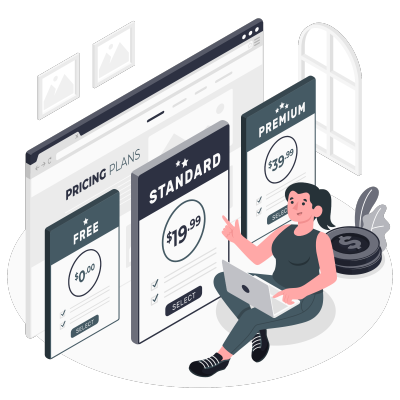Running an HVAC company requires the right pricing strategy for services. The right pricing means you’ll make a profit while, at the same time, you’re offering competitive rates. In this guide, we will explore flat-rate pricing and how to calculate labor rates. We’ll also look at how to incorporate labor rates into your overall pricing strategy.
What Is HVAC Flat-Rate Pricing?
Flat-rate pricing is a method of charging for services that is based on a set price for the entire job, regardless of how long it takes to complete. This type of pricing is common in the HVAC industry.
There are two main benefits of using flat-rate pricing. First, it is easier to estimate costs and bid on projects. Second, it is easier to manage your finances and budget for overhead costs.
The drawback of flat-rate pricing is that you may end up losing money on some projects if they take longer than expected. However, you can offset this risk by charging a higher flat-rate.
The Costs of Running an HVAC Company
Before we dive into how to calculate labor rates, it’s important to understand the costs of running an HVAC company. There are three main categories of costs:
- Direct costs: These are the costs of materials and labor for each job.
- Indirect costs: These are the overhead costs of running your business, such as marketing, rent, and insurance.
- Profit: This is the money you make after all expenses are paid. Your profit margin will determine how much leeway you have to offer discounts or give raises.
For example, let’s say your total monthly expenses are $10,000. This includes $5,000 for direct costs, $3,000 for indirect costs, and $2,000 for profit. Your profit margin is 20%. This means that for every $100 in revenue, you make $20 in profit.
How To Calculate Labor Rates
Now that we’ve reviewed the types of costs involved in running an HVAC company, let’s look at how to calculate labor rates. There are two main methods:
- Cost-plus pricing: This method involves adding your desired profit margin to your direct costs. For example, if your direct costs are $100 and you want a 20% profit margin, you would charge $120 for the job.
- Competitive bidding: In this method, you compare your prices to those of other companies in the area. You will need to research your competition and calculate your costs carefully to make sure you are not overcharging or underbidding.
Each of these pricing models has its pros and cons. Cost-plus pricing is simpler and easier to calculate, but you may end up charging more than your competition, thereby losing out on projects. Competitive bidding is more complex; however, if you calculate your pricing against your competitors carefully, this type of bidding can help you win more projects.
Incorporating Labor Rates into HVAC Pricing
Once you have calculated your labor rates, you can incorporate them into your overall pricing strategy. There are two main ways to do this:
- Fixed price: In this approach, you will charge the same price for all projects, regardless of how long they take. This is the simplest pricing strategy, but it can be risky if you underestimate the time required or the complexity of a project.
- Variable price: In this approach, you charge a different price for each project based on its estimated time. This is a more complex pricing strategy, but it can help you avoid losing money on projects that could take longer than expected.
The goal is to offer competitive prices and still make a profit. For example, if your labor rate is $100 per hour and you estimate a job will take two hours, you would charge a fixed price of $200 or a variable price of $200-$300.
Conclusion
Pricing your services correctly is essential for running a successful HVAC company. In this guide, we’ve covered two pricing methods: flat-rate and labor rate. We’ve offered ways to incorporate both into your overall pricing strategy. Use this information to establish a pricing strategy that works for your business and helps achieve your desired profit margin.

